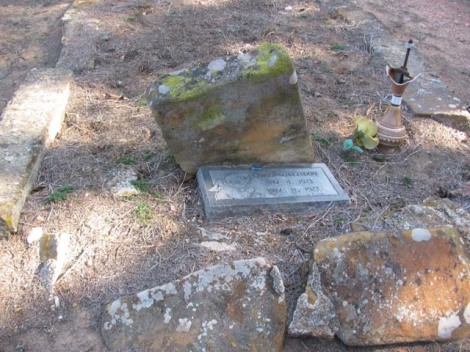
Grant Foreman, one of Oklahoma’s first historians, appears in this photograph overlooking the ruins of Fort Towson in 1900.
Although Fort Gibson in northeastern Oklahoma gets more publicity as “the first fort in Oklahoma,” its sister, Fort Towson in today’s Choctaw County, was established the same year – 1824.
Located close to where the Kiamichi River meets the Red River, the fort served several purposes. One, it was meant to protect the incoming Choctaws, who had signed the first removal treaties that eventually culminated in the federal Indian Removal Act of 1830. Two, it was supposed to stop the violence along the Mexican/American frontier, as Anglo settlers who had been forced out of Indian Territory upon its establishment in 1824 were none too keen on giving up their settlements and didn’t want to share their land with the Shawnees, who had received Mexican land grants. Three, it was charged with stopping Americans from entering Mexican Texas illegally.
The fort was well outfitted and usually held at least 75 to 100 troops. For the most part, the troops’ task was to build roads that connected to Fort Gibson, Fort Smith (Arkansas), and Fort Jesup (Louisiana).
After several acts of violence against the commanders of the fort by Americans just south of the Red River, the installation briefly closed in 1829 but then added more troops and served the US army until the end of the Mexican American War in 1848.
Abandoned by the 1850s, Confederate leaders from northeastern Texas took over the fort during the Civil War to recruit Choctaw and Chickasaw troops. The troops at the fort participated in the battle of Prairie D’Ane in 1864 as part of the Red River campaign.
The fort gradually disappeared due to fires, and because local citizens would “borrow” stones from the fort to build their own places. Eventually, very little remained of the fort. In 1900, eminent Oklahoma historian Grant Foreman took a photo of the fort’s ruins. I took photos of the same ruins about 100 years later.
Today, Fort Towson is an Oklahoma historical park and sponsors a number of special events throughout the year.
Check out the Red River Fort Tour on RRH!

The same ruins that Grant Foreman photographed at the turn of the century are still there, but have become smaller in the intervening years.



